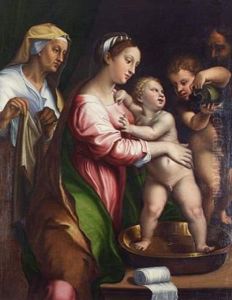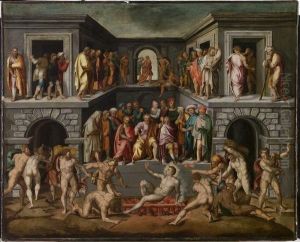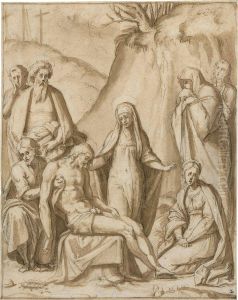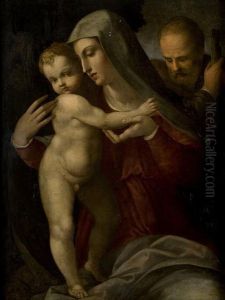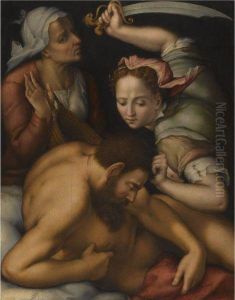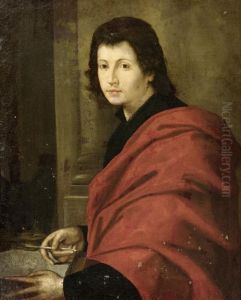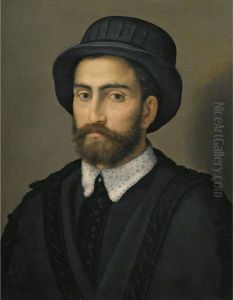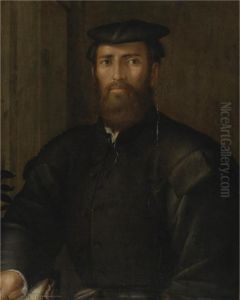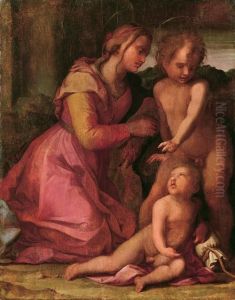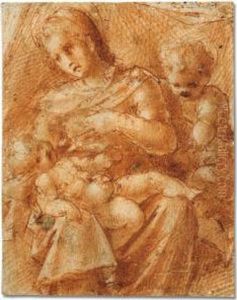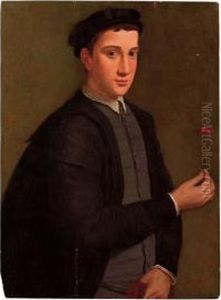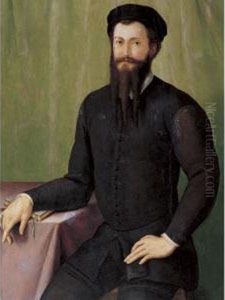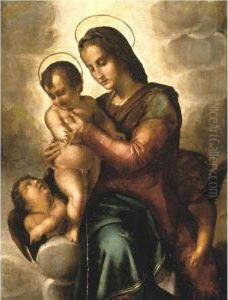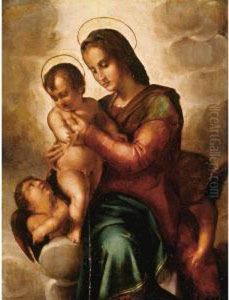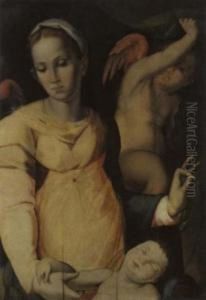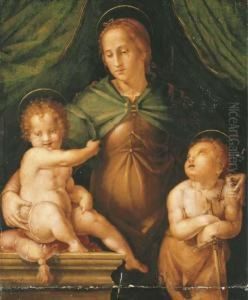Pier Francesco Foschi Paintings
Pier Francesco Foschi was an Italian painter of the Renaissance period, born in 1502 in Florence, Italy. He is often remembered for his contributions to the Florentine school of painting, where he developed a style that was deeply influenced by the works of Fra Bartolomeo and Andrea del Sarto. Foschi's work is characterized by its delicate handling of color and light, and a gentle, refined approach to the depiction of religious and mythological themes.
Throughout his career, Foschi remained somewhat overshadowed by the more dominant figures of his time, such as Michelangelo and Raphael, yet he managed to carve out a niche for himself with his distinctive style. He was particularly admired for his portraits and his ability to capture the subtleties of human expression. Foschi's paintings often featured serene and contemplative figures, set against the backdrop of idyllic landscapes or intimate domestic settings.
Foschi was not only a talented painter but also a respected teacher. He ran a successful workshop in Florence, where he trained a number of apprentices, passing on the techniques and ideals of the High Renaissance. His influence can be seen in the works of his students, who continued to propagate his style and approach to painting.
Despite his contributions to the arts, Pier Francesco Foschi's work was, for many years, somewhat neglected by scholars and art historians, who tended to focus more on his illustrious contemporaries. However, in recent decades, there has been a renewed interest in his oeuvre, leading to a reevaluation of his place within the context of Renaissance art. Today, Foschi is appreciated not only for his artistic skill but also for the quiet, introspective quality of his work, which offers a unique window into the soul of the Renaissance.
Pier Francesco Foschi died in 1567 in Florence, leaving behind a legacy that, though once underappreciated, has come to be recognized for its significant contribution to the Renaissance movement. His works are now held in high esteem, and can be found in various museums and private collections around the world, testament to the enduring appeal of his art.
